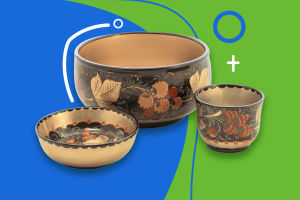Vitamin C, also known as ascorbic acid, is an essential water-soluble vitamin for the human body, renowned for its powerful antioxidant properties.
This crucial nutrient not only fortifies the immune system but also promotes iron absorption, aids in wound healing, and maintains the health of the skin and blood vessels.
Ensuring an adequate intake of vitamin C in your daily diet is paramount for overall health. But which food sources provide more vitamin C: vegetables or fruits?
Vitamin C in Fruits
Fruits are generally recognized as a significant source of vitamin C, particularly tropical varieties. Here are some fruits that are exceptionally rich in vitamin C:
1. Citrus Fruits
Citrus fruits such as oranges, lemons, grapefruits, and tangerines are well-known for their high vitamin C content. A medium-sized orange, for instance, contains approximately 70 mg of vitamin C. These fruits are refreshing and packed with other beneficial nutrients.
2. Strawberries
Strawberries are tasty and nutritious. Each 100 grams of strawberries provides about 59 mg of vitamin C. Their sweet-tart flavor makes them a favorite in various culinary dishes, from desserts to salads.
3. Kiwi
Kiwi is a powerhouse of vitamin C. A medium-sized kiwi contains around 71 mg of vitamin C, exceeding the recommended daily intake for many individuals. Besides vitamin C, kiwis are also rich in dietary fiber and antioxidants.
4. Mango
Mangoes are sweet and juicy, making them a delightful treat. Every 100 grams of mango contains about 36 mg of vitamin C. Additionally, mangoes are a good source of vitamin A, essential for eye health.
5. Papaya
Papaya is one of the tropical fruits with the highest vitamin C content. Every 100 grams of papaya offers about 62 mg of vitamin C. This fruit also contains digestive enzymes that aid in protein breakdown.
Vitamin C in Vegetables
While fruits are celebrated for their sweet taste and high vitamin C content, certain vegetables also boast impressive amounts of this vital nutrient, often surpassing some fruits. Here are several vegetables with high vitamin C content:
1. Red Bell Peppers
Red bell peppers are not only vibrant in color but also packed with nutrients. Every 100 grams of red bell peppers contain about 128 mg of vitamin C, more than twice that of oranges. They are also rich in vitamin A and fiber.
2. Green Leafy Vegetables
Green leafy vegetables such as spinach, kale, and Swiss chard are rich in vitamin C and contain ample amounts of vitamins A and K, and iron. For example, every 100 grams of kale contains about 120 mg of vitamin C. These greens are not only nutritious but also versatile in culinary uses.
3. Broccoli
Broccoli is another vegetable rich in vitamin C. Every 100 grams of broccoli provides about 89 mg of vitamin C. In addition to its vitamin C content, broccoli is high in fiber and numerous other essential nutrients.
4. Cauliflower
Cauliflower has a low-calorie content yet is rich in vitamin C. Every 100 grams of cauliflower provides about 48 mg of vitamin C. This versatile vegetable can be used in numerous recipes, from soups to stir-fries.
From the above data, both fruits and vegetables can be excellent sources of vitamin C. Interestingly, some vegetables contain higher amounts of vitamin C than many fruits.
For example, the vitamin C content of red bell peppers and kale significantly exceeds that of oranges and strawberries. This suggests that incorporating a variety of fruits and vegetables into your daily diet is essential for meeting your vitamin C needs.


